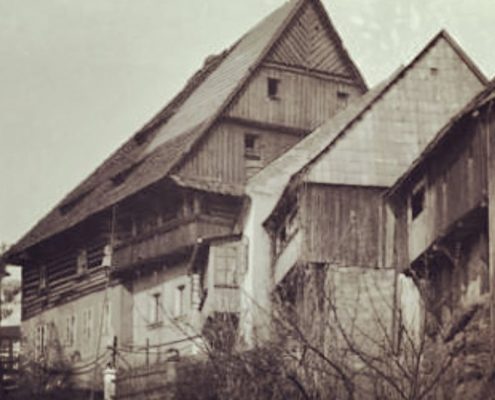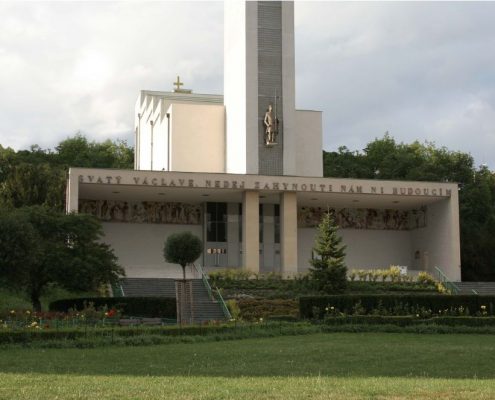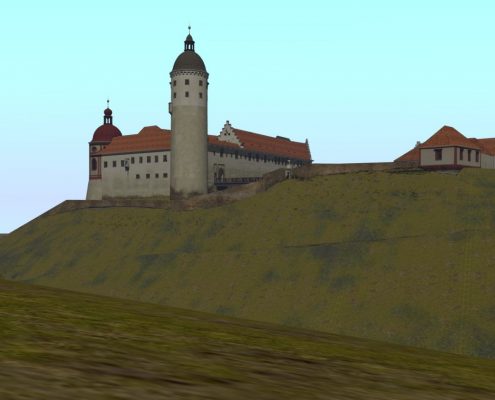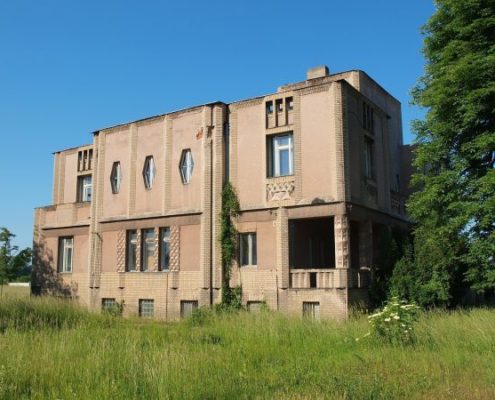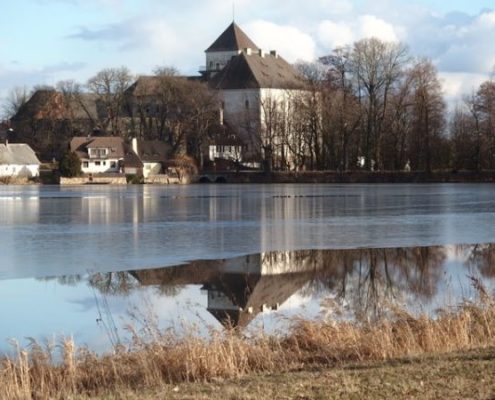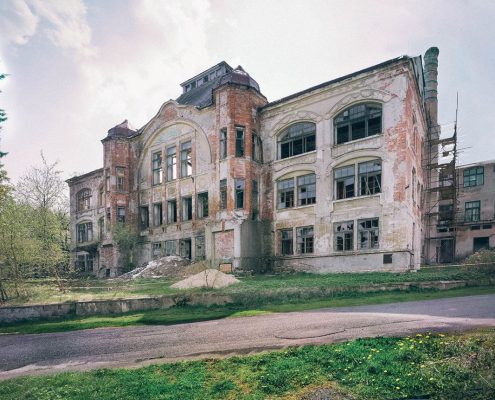Learn about our activities
Projects

Select project that you would like to support
The Old Dye-Works in Úštěk
A rare and extraordinary sight to behold, this dye-works, which dates back to 1705, forms an integral part of the cluster of “birdhouses” perched on a rocky promontory in the town of Úštěk and is of great European cultural significance. The preserved dyeing equipment alone is a very unique find in Europe. The hybrid building, which consists of a ground floor made of brick, a first floor built in a “log-cabin” style, and a cellar carved directly into the sandstone bedrock, is the product of a series of intricate building phases. An unusually large amount of the building’s original structures, details, and architectural elements have remained intact. The building suffered from serious neglect and a lack of maintenance after 1945, however, the roof framing is now in the process of being restored while the building’s overall renovation plans are currently being drawn up. Once completed, the old dye-works workshop is intended to be open to the public for viewings and further anthropological study.
Saint Wenceslaus Church in Prague-Vršovice
The completion of the sculptural decor in Saint Wenceslaus Church, which is situated on Čech Square in one of Prague‘s districts called Vršovice, is definitely an interesting task which would significantly contribute to the revitalization of Prague’s avant-garde architecture. This unique sacral building built in the functionalist style has its place not only in Czech, but also in the international architecture of the first half of the 20th century.
Zvířetice 3D Project
The unique Zvířetice 3D Project was originally based on the following vision: to provide the possibility of seeing and visiting the ancient and nonextant castle in all its glory again. With the use of first-rate computer graphics, the project depicts the castle ruin in its real surroundings the way it looked in 1683, which was also the year when the building operations reached their peak.
Villa Benies
Villa Benies is situated in Lysá nad Labem, a town in the Central Bohemia Region some 40 kilometres away from Prague, in a neighbourhood called Litol. It was designed by architect Emil Králíček in 1912. The villa itself is a two-storey brick building with a flat roof originally designed to be a rooftop garden. As it was one of the first buildings with a flat roof in the Czech Republic and the very first building in the country designed to have a rooftop garden, the villa was declared to be an important architectural landmark by experts in the field in the early 2000s.
Rožmitál Castle
Rožmitál Castle is situated in Rožmitál pod Třemšínem, a town in the Central Bohemian Region around 75 kilometres south west of Prague. The castle rises above the ponds near the deep Brdy forests quite close the Prague and it is closely connected to the most important events in Czech history. Its early-renaissance style as well the remainders of the former gothic architecture are significant and charming architectural examples of the different historical eras. Unfortunately, the current owners have not invested in the maintenance and reconstruction of the castle and even though the castle has been secured by grouting, it is still not a safe site as the shingle roof has been vastly damaged. A complete reconstruction would offer multiple new and interesting opportunities in terms of how the castle and the surrounding park could be used.
Elias Palme Factory
Another project the Czech National Trust has decided to pay close attention to and to put its efforts into is the Elias Palme Factory, a former chandelier factory in north Bohemia. The former factory is often nicknamed Eliáška and is located in Kamenický Šenov, which lies in a region that is well-known for its glass production and glass industry in general. The CNT believes that the former factory site of the once renowned company which produced chandeliers to iconic buildings all around the world is not only a cultural heritage, but also an intellectual one since it carries the legacy of the chandelier-making tradition and significantly contributes to the genius loci of the small north Bohemian town.

